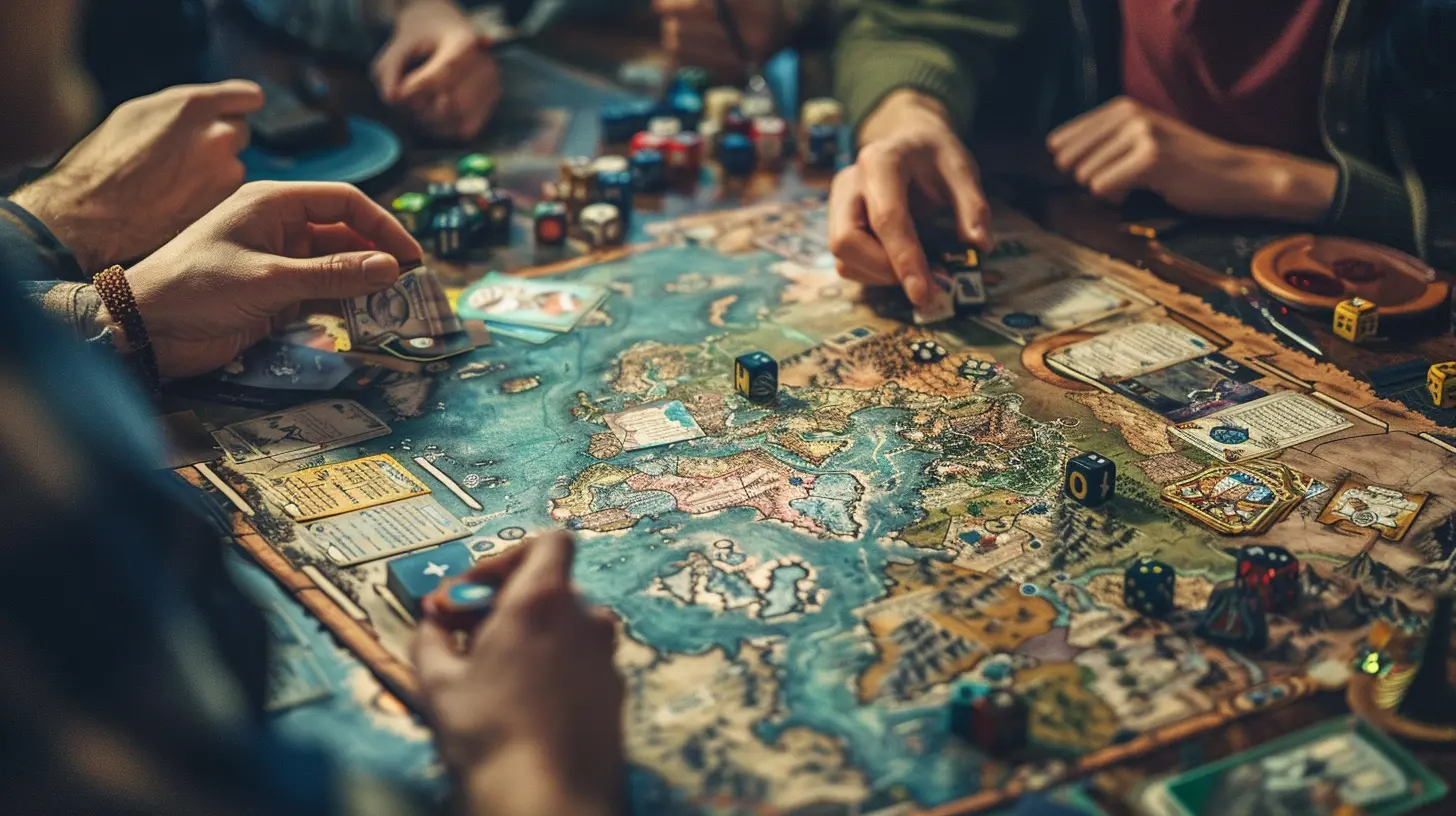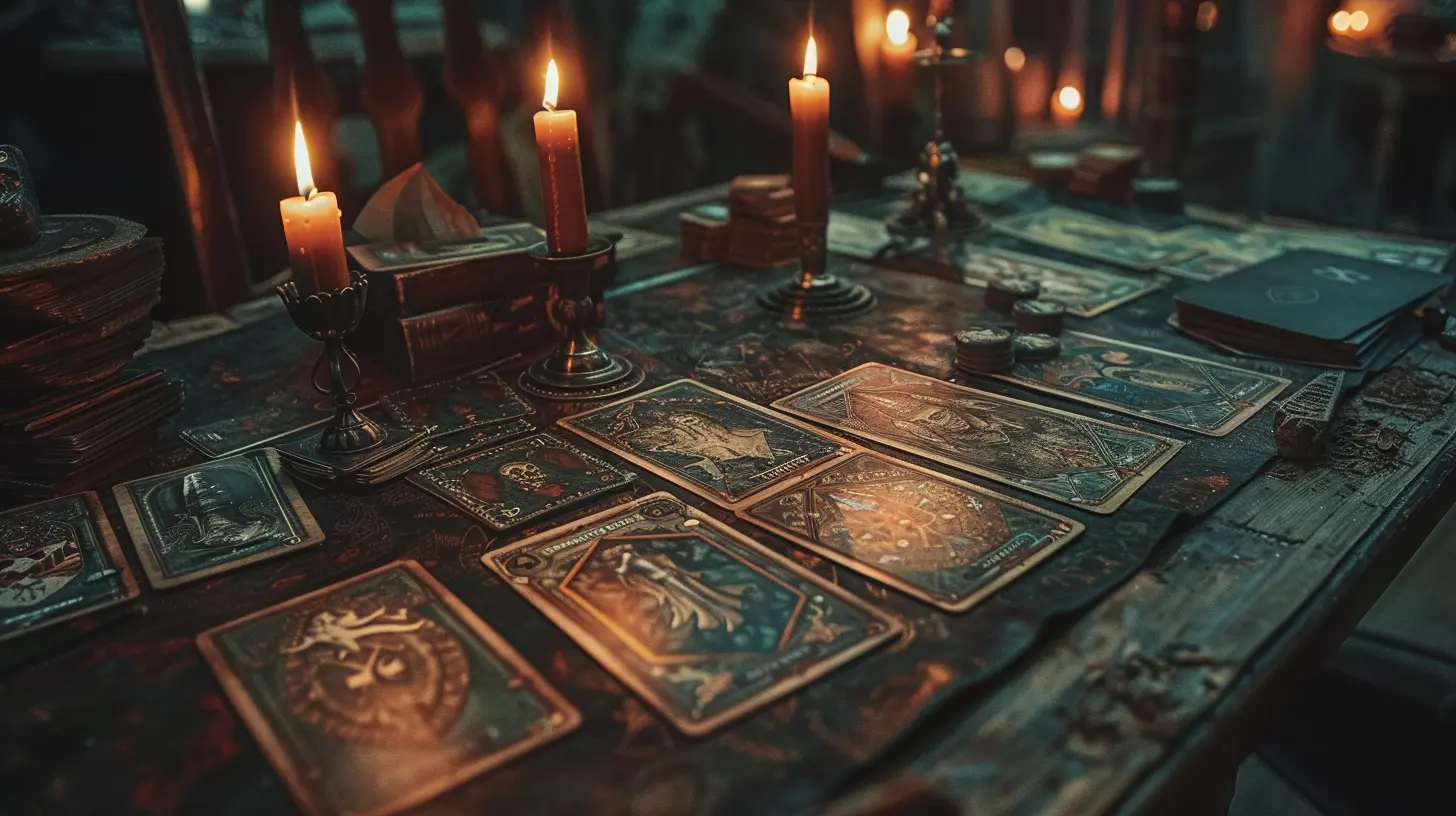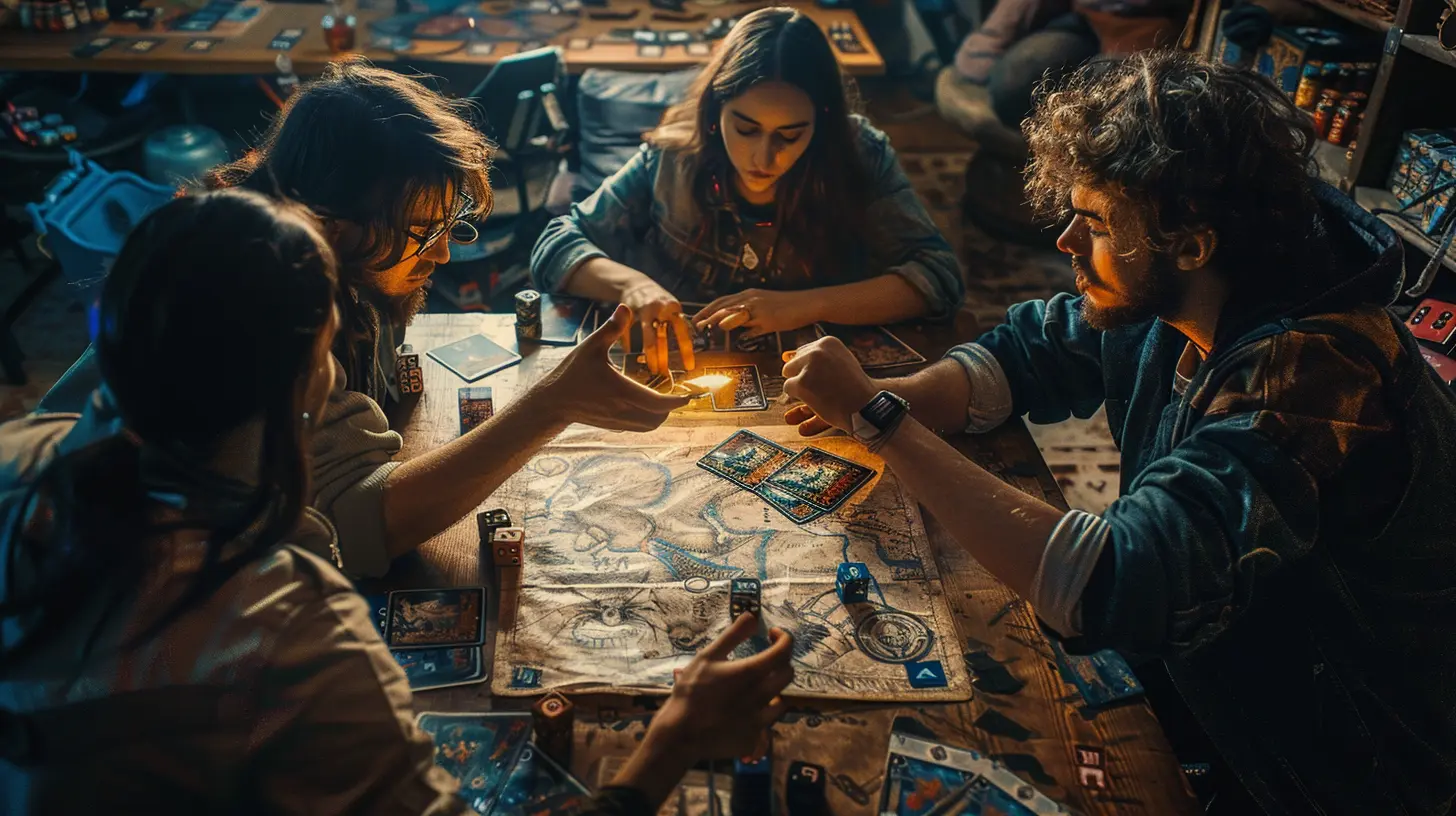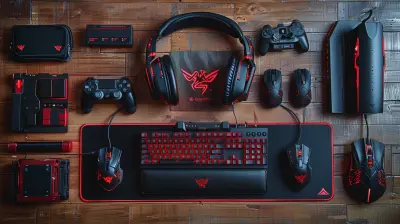Card Drafting: The Key to Winning in Strategic Tabletop Games
16 October 2025
Let’s get real for a second—card drafting isn't just another gaming mechanic slapped onto a box to make the game "more fun." It’s a cerebral battleground. It’s where strategy gets personal. If you’ve ever lost a game and thought, “Man, I should’ve picked that card in round two,” welcome to the wonderful world of card drafting.
Whether you’re new to tabletop games or a seasoned veteran with worn-down sleeves, understanding card drafting can seriously level up your gameplay. This mechanic isn’t just about choosing a card; it’s about shaping your entire strategy, outsmarting your opponents, and often, defining your path to victory before the game has even properly started.
In this in-depth article, we’ll dig deep into card drafting—why it's crucial, how it works, and how you can use it to crush your competition and win with style.
What Is Card Drafting Anyway?
Card drafting is a mechanism where players select cards from a limited set to build a hand, a deck, or a collection of actions and resources. Once a card is picked, it’s usually gone for good—meaning your decision not only helps you but blocks your opponents too.Think of it like a pizza party where everyone chooses slices from the same pie. You want that spicy pepperoni? Better grab it quick before someone else does. It’s a blend of opportunity, timing, and reading the room.
Common Types of Card Drafting
Before we go further, let’s break down the main styles of card drafting:- Pass-and-Play (or Pack Drafting): Everyone gets a hand of cards, picks one, and passes the rest to another player. This continues until all cards are taken.
- Open Drafting: Cards are displayed publicly, and players take turns choosing.
- Closed Drafting: Everyone picks simultaneously from a hidden selection.
- Set Collection: Players draft cards to build sets—think Sushi Go!
- Deck Construction: Drafting creates your in-game engine or deck, used throughout the game.
Each style adds its own flavor to the game, but the core principle remains: your choices matter more than you think.
Why Card Drafting Matters
Here’s the deal. Card drafting isn’t just a mini-game at the start of a bigger one. It’s the foundation. The decisions you make during drafting will echo through every turn you play. It's like laying tracks before the train arrives—you better know where you're headed.It's All About Denial and Opportunity
Drafting isn't just about what you take—it's also about what you leave. Sometimes, the most strategic move isn't picking the best card for you but denying your rival their golden ticket. If you know Emily is stacking for endgame bonuses, grabbing that one rare scoring card before she does can throw a wrench in her plans.This is why top-tier players don’t just focus on their own needs—they’re thinking about everyone else’s too.
Drafting Shapes Your Strategy
Ever played a game where you tried to do too many things and ended up doing none of them well? That’s the pitfall of not drafting with focus. Smart drafting helps you specialize, commit, and build a blueprint for success rather than winging it every turn.A well-drafted hand or deck gives you synergy. And synergy? That’s pure power.
The Mind Games of Card Drafting
Alright, this is where it gets juicy. Drafting is part poker, part chess, and part psychological warfare.Reading the Player to Your Left
In many drafting games, you pass cards to the player next to you. The experienced drafter will tell you that playing the cards is only half the battle—the other half is playing the people.If Kyle is consistently passing you high-resource cards, he’s probably not building a resource-heavy engine. That tells you something. Every draft is a silent conversation. The challenge? Learning the language.
Bluffs and Signals
Sometimes, you draft a card just to send a message. Maybe you take a high-risk, high-reward card early in the game to hint at your intended strategy. Now your opponents either call your bluff or spend future drafts trying to block your path.Drafting isn't just building—it’s bluffing, baiting, and bold moves.
Drafting Strategy: How to Win More Games
Let’s get to the good stuff—how exactly do you get better at card drafting? Here are some killer strategies that can turn the drafting table into your domain.1. Prioritize Flexibility Early On
In the first few rounds, stay flexible. Don’t commit too early unless the card screams synergy. Versatile cards give you options, and options are your best friend when you’re not sure what others are doing.It’s like choosing a major in college—you don’t want to commit to quantum physics before figuring out if you even like math.
2. Look For Synergistic Combos
Ever heard the phrase “the whole is greater than the sum of its parts”? That’s synergy. Some cards on their own are just okay, but together? They’re unstoppable.Look for combos, loops, and triggers. Draft for synergy, not just strength.
3. Cut the Best Card from the Pack—Even If You Don’t Need It
Denial drafting is the art of picking a card simply so your opponent can't use it. If you've got a solid draft and see a card that could win the game for someone else? Take it. Think of it as burning a bridge before the enemy crosses it.4. Pay Attention to What Others Are Building
Yes, focus on your own game—but don’t play it with blinders on. This game isn’t solitaire.Scan the table. Notice the patterns. Is someone hoarding attack cards? Is someone going for all the bonuses tied to a specific resource? Use that info to steer your own choices.
Card Drafting in Popular Games
Still with me? Awesome. Let’s zoom in on some battles you might’ve already fought. These games showcase drafting at its most glorious.7 Wonders
A poster child for pass-and-play drafting. You get a hand, draft one card, and pass. Timing, resource balancing, and reading opponents are everything. Draft wrong, and you're building pyramids with hay.Sushi Go!
Cute artwork. Deadly decisions. Even though it's light and fast, Sushi Go! is deceptive. Drafting for set bonuses and blocking your neighbors makes this a sushi battle royale.Blood Rage
Here, card drafting sets the tone for the entire Viking bloodbath. Draft the wrong upgrade card and you might doom yourself to mid-tier Valhalla.Magic: The Gathering (Draft Format)
No article on drafting is complete without tipping the hat to MTG. The drafting format in Magic is a calculated, competitive dance of building a deck while anticipating your opponents' moves. It’s drafting on steroids.Why Card Drafting Feels So Satisfying
Let’s not overlook the emotions here. Card drafting is rewarding because it feels earned. Every card you pick is a decision. Some good, some you regret. But all of them are on you.That level of agency makes every victory sweeter and every loss a learning moment.
It Turns Strategy Into a Puzzle
Each draft is a puzzle, a game within a game. You’re not just solving your strategy—you’re solving everyone else's, too. It’s a test of intuition, timing, and foresight. And when it all comes together? Chef’s kiss.Card Drafting Tips for Beginners
New to drafting? No worries. Here’s your rookie survival kit:- Don’t panic-pick—take a second to scan the pack.
- If you're unsure, draft for versatility.
- Start with a focus but allow some wiggle room.
- Deny your opponents—if you see something too good, don’t let it slide.
- Watch what others are passing you—it’s a clue.
- Keep track of your drafted cards—that “aha” synergy moment is gold.
The Future of Card Drafting in Tabletop Games
Card drafting isn't going anywhere. In fact, it’s evolving. Designers keep finding new ways to integrate drafting into co-op games, legacy formats, and hybrid genres.Expect to see more creative uses—like real-time drafting, asymmetric drafts, or even digital aids that spice up the process.
Why? Because drafting is inherently fun, endlessly strategic, and wildly replayable. It’s the peanut butter to the tabletop jelly.
Final Thoughts
Card drafting isn't just a mechanic. It's a mindset. It's about making meaningful decisions, adapting on the fly, and sometimes, being just a little bit sneaky. Whether you’re passing cards like a seasoned strategist in 7 Wonders or piecing together a sushi feast, every draft tells a story.And here’s the thing: that story? You write it one card at a time.
So next time you're at the table, drafting your way through a tense pick, remember—you’re not just picking a card. You’re picking your path to victory.
Game on.
all images in this post were generated using AI tools
Category:
Tabletop GamesAuthor:

Stephanie Abbott
Discussion
rate this article
1 comments
Renata Black
Great insights on card drafting! It truly is a game-changer in strategic tabletop games. Understanding the nuances of card selection can elevate gameplay and enhance strategy. Excited to implement these tips in our next game night! Keep up the fantastic content!
October 18, 2025 at 4:10 PM

Stephanie Abbott
Thank you! I'm glad you found the insights helpful. Enjoy implementing the tips at your next game night!


